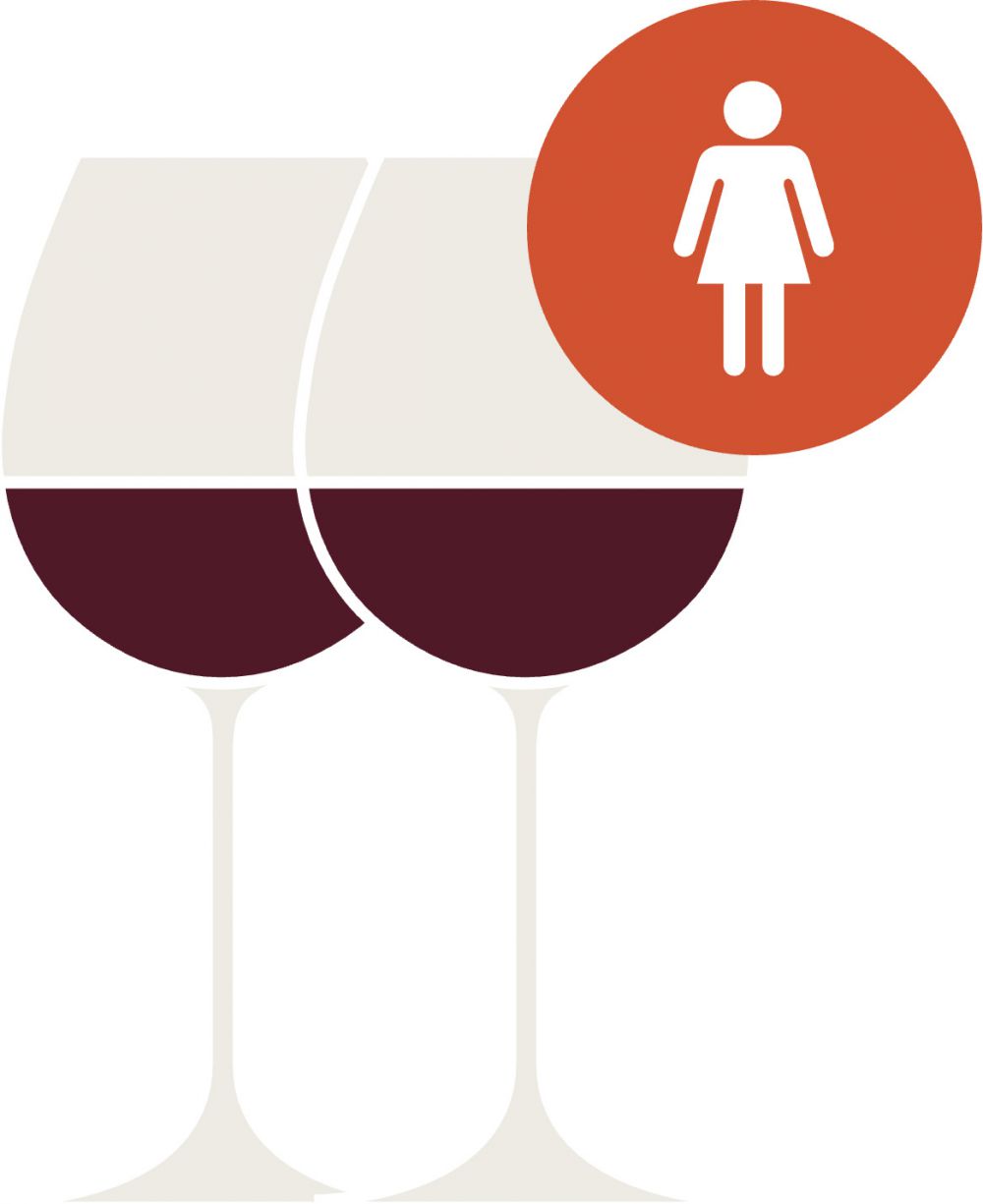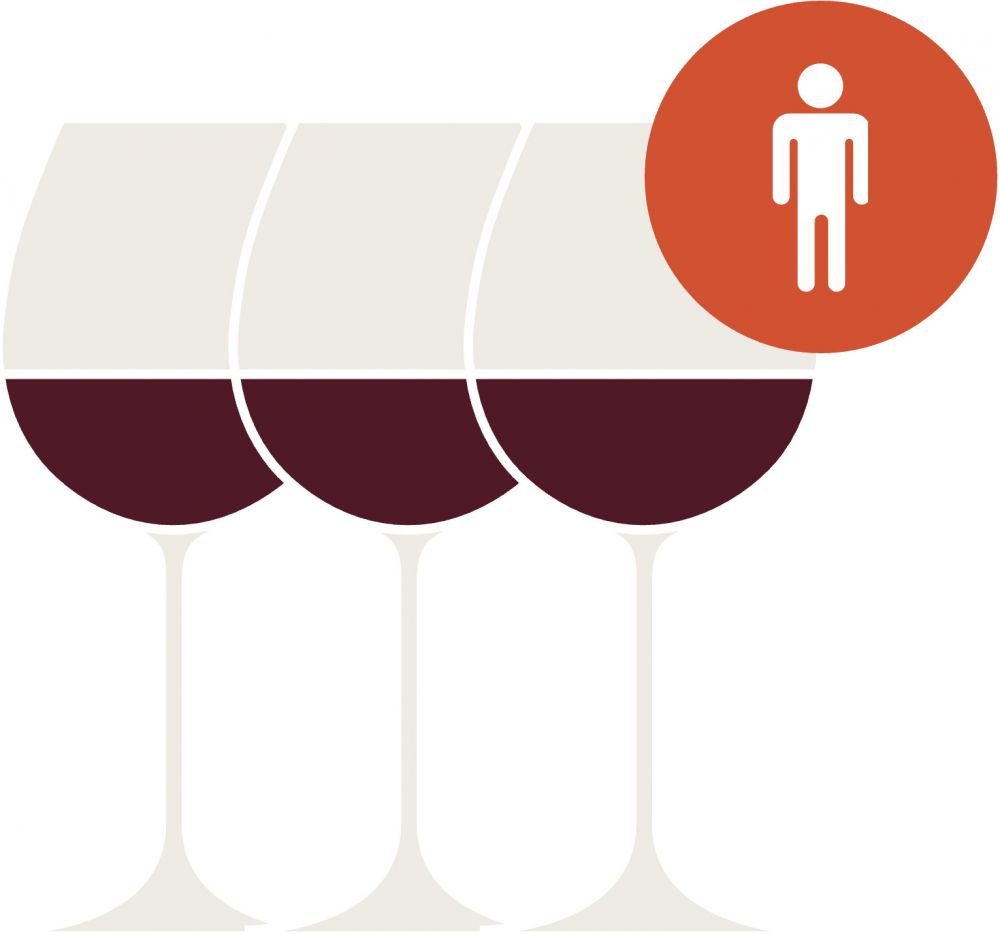Enjoy the best wine has to offer
Choose
- To make informed choices
- Whether or not to drink
- To respect others around you and the wine you drink
Share
- wine with friends and family, enjoy good moments,
- wine with good food and water; find the harmony of taste; sense the wine; discover its unique character; drink slowly; take the time to fully appreciate
Care
- Because caring about yourself is caring about the others
- Means enjoying your wine in moderation, avoiding excess and dangerous behaviours; avoiding drinking if you drive, you are underage or pregnant; understanding the drinking guidelines
According to the latest scientific evidence*, a low-risk consumption of wine for healthy adults is considered to be:

Up to 2 drinks
Units a day for women
(the equivalent of up to 200 ml wine with 12.5 vol%)

Up to 3 drinks
Units a day for men
(the equivalent of up to 300 ml wine with 12.5 vol%)

No more than 4 drinks
Units on any occasion.
-
!
Alcohol should be avoided in certain situations such as pregnancy, when taking certain medication, driving or operating machinery. These guidelines apply when wine is consumed within a healthy and active lifestyle and the following drinking pattern
- consume wine with the meals,
- alternate every glass of wine with water,
- avoid binge drinking in any occasion.
-
!
- If you have doubts, ask your doctor for advice on your drinking habits and your health.
- And for more information on how to enjoy wine moderately and responsibly, we encourage you to navigate our website where you will find more information on responsible drinking patterns, wine and calories, when to avoid drinking wine, etc.
* For more information on the scientific evidence, please visit the Wine Information Council website.
Please note that no universal drinking guidelines exist, and a wide range of drinking guidelines are published by authorities around the world. If you would like to know whether national guidelines exist in your country, a comprehensive table with all the International Drinking Guidelines can be found on the website of the International Alliance for Responsible Drinking.
How can I calculate the measurement units?
1 drink unit* represents 10 g of pure alcohol which equates to:

Wine
100 ml
at 12.5% vol

Sparkling wine
100 ml
at 12.5% vol

Fortified wine
60 ml
at 20% vol

Aromatised wine
85 ml
at 15% vol
(*) This term indicates the average content of pure alcohol expressed in the most common units of consumption, although serving volumes and consumption guidelines vary across countries.
Wine serving sizes
When we talk about drinking guidelines and the moderate consumption of wine, we often talk in drink units or in number of glasses. But one thing that is rarely mentioned is that drink units and serving sizes vary from country to country, making comparisons difficult.
Most typical serving sizes are 100 ml, 125 ml and 175 ml for still dry wines, and usually smaller for fortified/liqueur/sweet wines.
Good practices have also been emerging around the world to monitor the amount of wine being poured: countries such as Germany have introduced a very useful practice in restaurants where it is mandatory for wine glasses to have a fill-up line of 100 ml.
We don't recommend serving sizes of 250 ml. Not only is it more than what is recommended in the drinking guidelines but white wine, for example, will also warm up faster making your experience less enjoyable.
!Such a large serving size is not recommended.

Our advice?
Never top up your glass. By pouring just the right amount (~100 ml), you will leave the necessary air space to hold the wine’s aroma AND it will let you swirl your wine properly. Also, by drinking slowly, the aromas will fill your glass and give you the perfect experience.